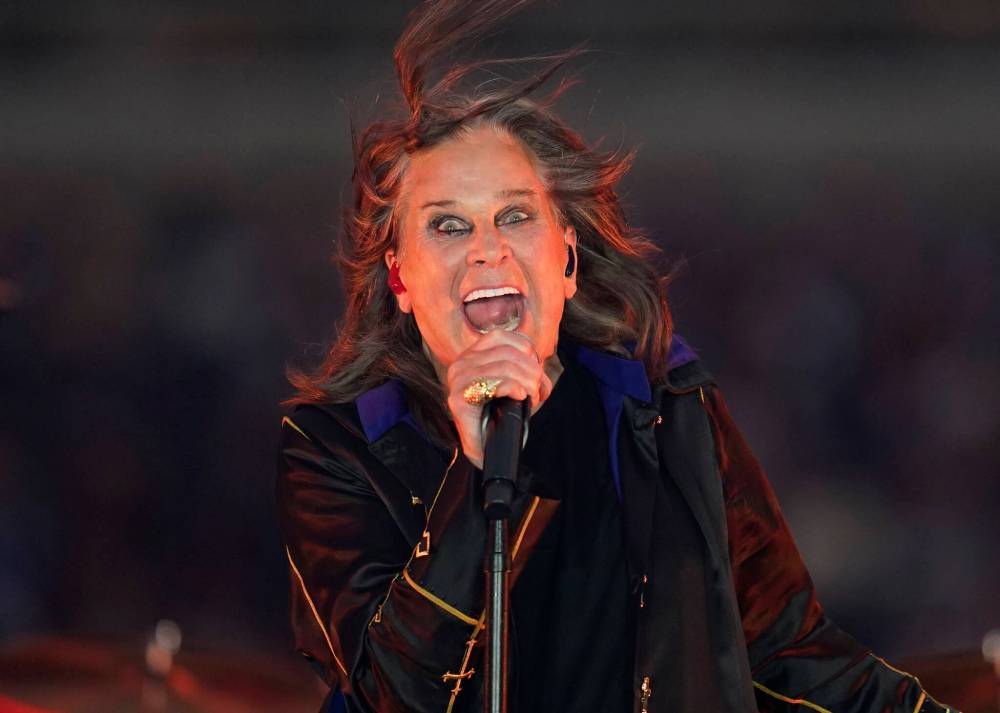Metal maverick
Osbourne’s second memoir chronicles health woes, final show
Advertisement
Read this article for free:
or
Already have an account? Log in here »
To continue reading, please subscribe:
Monthly Digital Subscription
$0 for the first 4 weeks*
- Enjoy unlimited reading on winnipegfreepress.com
- Read the E-Edition, our digital replica newspaper
- Access News Break, our award-winning app
- Play interactive puzzles
*No charge for 4 weeks then price increases to the regular rate of $19.00 plus GST every four weeks. Offer available to new and qualified returning subscribers only. Cancel any time.
Monthly Digital Subscription
$4.75/week*
- Enjoy unlimited reading on winnipegfreepress.com
- Read the E-Edition, our digital replica newspaper
- Access News Break, our award-winning app
- Play interactive puzzles
*Billed as $19 plus GST every four weeks. Cancel any time.
To continue reading, please subscribe:
Add Free Press access to your Brandon Sun subscription for only an additional
$1 for the first 4 weeks*
*Your next subscription payment will increase by $1.00 and you will be charged $16.99 plus GST for four weeks. After four weeks, your payment will increase to $23.99 plus GST every four weeks.
Read unlimited articles for free today:
or
Already have an account? Log in here »
At one point in Last Rites, Ozzy Osbourne recalls seeing the movie This is Spinal Tap shortly after its 1984 release and not realizing that it was a comedy, “thinking to myself, wow, this is the most interesting and relatable documentary I’ve ever seen.”
He’s been lost in a maze of tunnels and hallways trying to get to the stage. After firing Ozzy, Black Sabbath once tried to take a model of Stonehenge on tour, but the set builders misread the plans and constructed it in metres rather than feet (whereas in the movie it’s too small, in Black Sabbath’s case it was too big). The amps going to 11 reminded him of when they spent a ton of time and money getting their amps across the ocean, then couldn’t use them on American voltage.
Although the madness of Osbourne’s long, strange life feels somewhat normal to him, he remains in awe of how he went from growing up so poor that his parents wouldn’t buy underwear to becoming one of the most famous rock stars in the world.

Ashley Landis / Associated Press files
Despite the relatively downbeat subject matter of Ozzy Osbourne’s posthumous memoir, the singer’s grateful attitude about life keeps the book from becoming a downer.
However, since this is his second major memoir, following 2009’s I Am Ozzy (also written with Chris Ayres), the emphasis isn’t on the piles of cash blown during parties, but all the money Osbourne has thrown at hospitals trying to keep himself alive.
It’s an uneven book as a result, but a proper and fitting memoir all the same. Ayres does a good job of structuring the book to intersperse more unique moments and memories, but much of this material will be familiar to those who have read I Am Ozzy. Also, due to the repetitive nature of his health issues, the memoir feels less like Osbourne’s life story and more like his medical journal at times.
But that’s his life. There’s no getting away from it, and it would be a cheat to try. What salvages these parts is Osbourne’s thoughtful outlook on his health problems, world events and family life. Despite most of what Osbourne talks about being quite depressing, the book isn’t a downer — Ozzy has a grateful attitude through most of the misery.
After all, as he often points out, who would have thought he would have still been alive to see any of this? Who would have thought he’d make it through the 1980s, never mind through the COVID-19 pandemic?
The book ends with Osbourne’s reflections on his final performance on July 5, which ended up being the highest-grossing charity concert in history, and with the singer looking forward to his plans for the future. “I’ve already got an idea for a new album,” he writes, while admitting that he will never perform again, and noting he has newer health problems on top of the old ones.
Of course, the reader knows Osbourne died just 17 days after that final show — and Ayres, his writer on the book, knows this too. He structures the final pages to frame that concert as a capstone to a life strangely lived, but ultimately well-lived, with Ozzy triumphant.

Last Rites
By itself, the memoir feels a bit slack and too heavy in the back end of Osbourne’s life, given his same-crap-different-day tone around so many of his personal problems. But taken together with I Am Ozzy, it’s a fitting and engaging complement to a massive, impactful and powerful body of artistic work.
From the beginning to the end, Ozzy sounded amazing and unique, a true trailblazer and star.
Jonathan Ball is the publisher of Stranger Fiction and writer of the forthcoming graphic novel Last Breeds, which can be preordered now.


